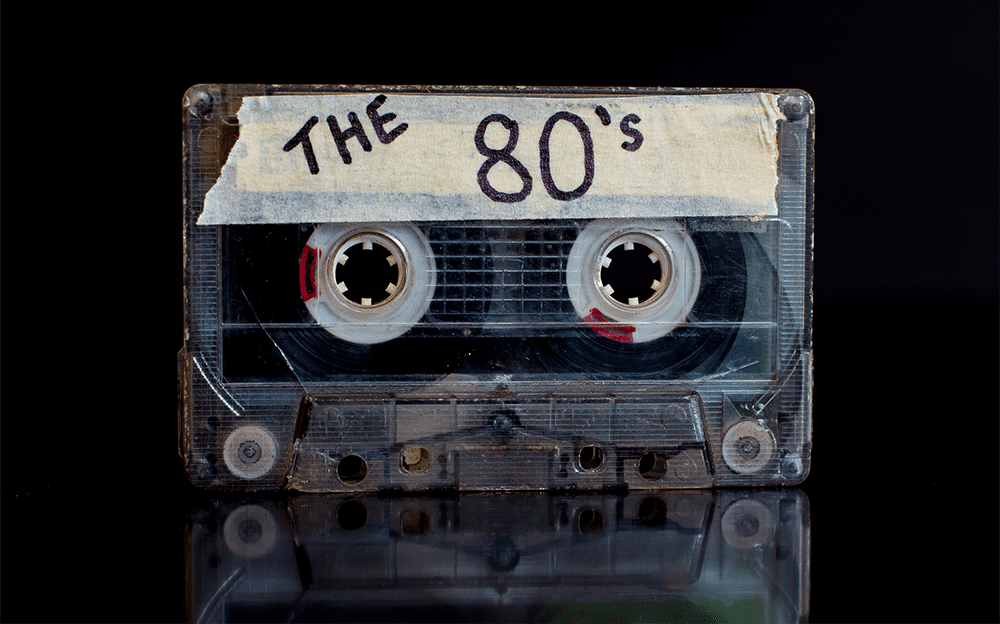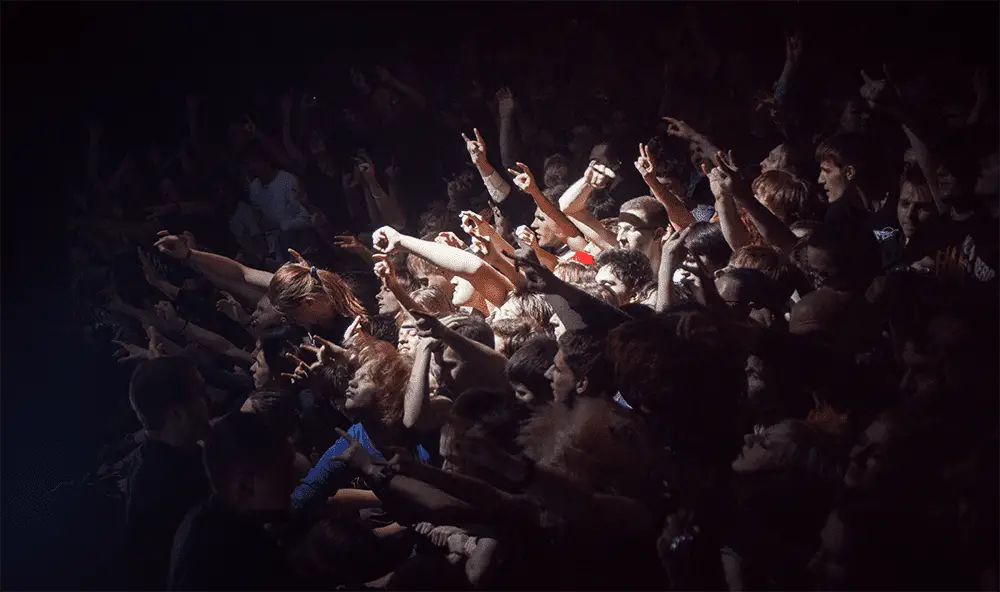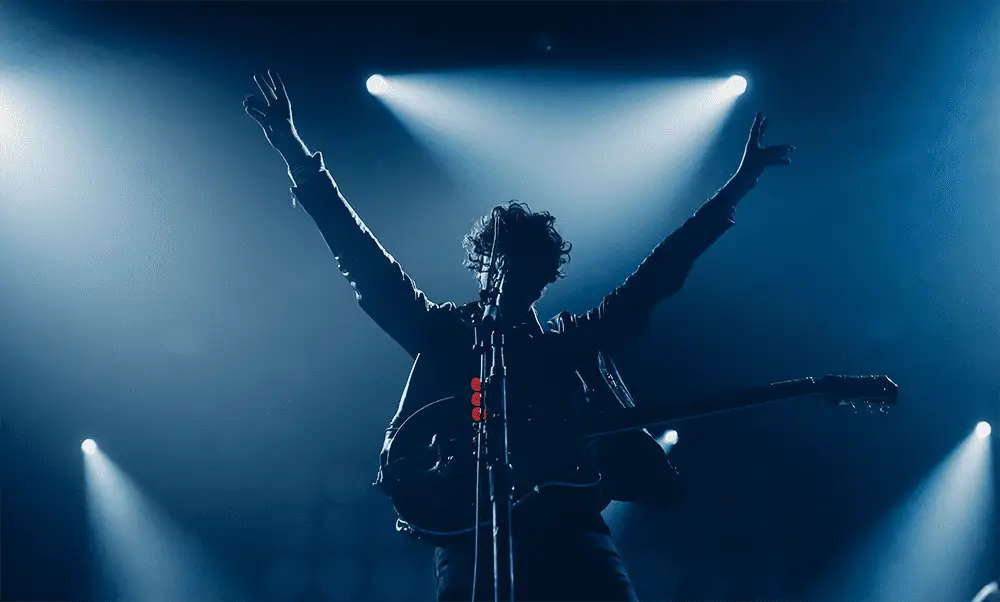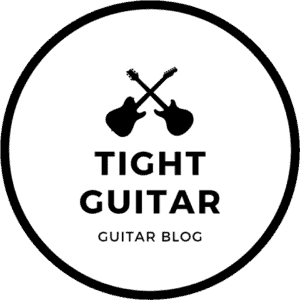
The fate of the guitar has been the subject of much mourning, with some even declaring it dead. However, is this really the case? Could the guitar solo once again find its way onto the top charts? Join us as we explore the electric world of guitars to see if there are any signs of life.
As a general rule, the guitar remains a popular instrument among musicians, despite some claims of its decline. It may no longer be the centerpiece of many groups, but it still plays a vital role in the rhythm section. The guitar continues to be in demand and is a staple in most musical ensembles.
Let’s dig deeper and find out how in god’s name we got from Led Zeppelin to Justin Bieber, what happened to the guitar along the way, and what the future holds for our beloved guitar.
A Brief History of the Electric Guitar

From Acoustic to Electric
The electric guitar revolutionized the music scene in the 1930s with its new sounds and increased volume. Guitarists gained independence from the rhythm section and could now carry the groove by themselves, take on lead roles, and play solos.
The Golden Age of the Electric Guitar
In the 1940s, the blending of Blues with youthful rebellion resulted in the birth of Rock and Roll. The desire for the next big sound was at an all-time high, and the electric guitar played a pivotal role in bringing this new genre to life.
Rocknroll roamed the earth for a few good decades and shapeshifted many times, giving birth to various new musical genres such as Rockabilly, Folk-Rock, Southern-Rock, Heavy Metal, and countless others.
The 1960s and 1970s were a heyday for guitar music and guitarists, with many legendary bands and guitar gods emerging during that time. From Led Zeppelin to Eric Clapton, Pink Floyd to the Rolling Stones, Jimi Hendrix, and many others, these artists packed concert halls, sold millions of records, and dominated the charts.
The Beginning of the End – The ’80s

During the ‘80s, the rise of new tools and instruments such as computers and drum machines caused a shift in music recording and created a digital influence in the music world. This rise in popularity started pushing the guitar to the side, but it still remained an integral part of most musical genres.
The drum machine impacted music in a significant way during the 80s, helping to shape the rise of Hip-Hop as a new genre. This instrument introduced a new, non-live element to music with its repetitive and straightforward drum beat, replacing the traditional live drummer and giving birth to electronic beats.
The rise of the drum machine had a profound effect on the music industry, further sidelining the guitar. Its impact was so massive that it permanently transformed the music world. Without it, modern music would not have the same sound it does today.

Sadly, most top-charting hits we hear today feature solely a drumbeat rather than a live drum take (sometimes it’s a mix of both), and if you scroll through your social media feed, most chances you’ll stumble upon more than a few hipsters equipped with a drum machine of some sort.
10 More Years of Stardom
The ‘80s was a weird decade for music makers. Many changes occurred in a short period, and within that musical mess, the Glam-Rock was born. New guitar gods like the revolutionary Eddie Van Halen brought to the world new playing techniques such as tapping and guitar harmonics which are still popular today.
With new technologies, new guitar pedals, and new amplifiers, a unique distorted guitar sound came to rule the mainstream of the ’90s, and bands like Guns’n’Roses, Pearl Jam, and Nirvana roamed the top-charting lists. At that time, it seemed like the age of guitar was never going to end.
The Disappearance of the Guitar Solo
During the ‘70s (and even the ‘60s), Punk music and culture began to form. Born out of Rocknroll, this rebellious music featured a simpler construct, frequent use of power chords, anti-establishment lyrics, and an angry attitude. As a result, this style attracted a different and less articulated type of musician that couldn’t care less about complicated guitar solos and intricate musical parts.

The Rise of Pop and the Death of the Electric Guitar
The 2000s brought about a new musical trend that was easier for the masses to consume. MTV, electronic drumbeats, and big money converged to create a genre many guitar players deeply despise. Producers realized that simple and repetitive 4-chord songs were easier for audiences to digest, and this combined with the popularity of teen TV drama, led to the rise of a new style of music.
The musical landscape of the 2000s saw a stark shift towards a more simplistic and formulaic pop sound. The electric guitar, once revered as a tool for creating art, was demoted to a mere stage prop for the sake of appearances. The shallow lyrics and repetitive harmonies dominated the charts, produced by profit-driven companies that prioritized commercial success over musical diversity and artistry.
Here is a side-by-side comparison highlighting the difference between original and commercialized cover versions:
Quite ironic to listen to one of the biggest plastic-pop stars singing how much she “loves” Rocknroll. Try to address it as a parody. Maybe this way, the experience will be a little more bearable.
The Crimes of Post-Punk
It seems like Post-Punk has abandoned its rebellious origins and embraced the shallow, commercially driven MTV teen culture, resulting in the creation of bands like Blink-182 and Green Day. These popular merchandise-selling groups hammered the final nail into the coffin of Rock and Roll, transforming it into a sugar-coated product designed to appease the masses and devoid of its original spirit.

There is Still Hope! The Guitar is NOT Dead Yet!
Guitar Popularity in 2023
Many have questioned the declining popularity of the guitar and for good reason, as it has become increasingly rare to hear a guitar-centric song topping charts in recent times. Let’s examine the evidence to determine the current status of the guitar.
The electric guitar remains a popular instrument among musicians, even in 2023. The global Electric Guitar market size is projected to reach USD 633.8 million by 2026, with a compound annual growth rate of 3.6% during 2021-2026. These statistics demonstrate the ongoing demand for electric guitars.
No One Could Kill the Metal
Where there is Metal, there is hope for guitar players. You can always find them in the Metal section if you are still yearning for dual-guitar bands with massive crushing sounds. Apparently, there is no Metal music without walls of distorted guitars, massive guitar lines, and crazy guitar solos.
Ever since high school, the Metal audience was a castaway. The Metalheads have their own swag, style, fashion, and musical preferences. Plus, they are very loyal to that way of living. This detachment of Metal-lovers from the mainstream is why Metal is here to stay and with it, so is the electric guitar!

The Guitar Accepts Different Roles
The guitar is and has always been a highly versatile instrument, and with the advancement of technology and guitar effects, the guitar is now capable of doing more than ever. Nowadays, the guitar can mimic almost every sound or instrument. It can sound like an organ (with the help of a Harmonizer) or a bass (using an Octaver). It can imitate nearly every synthesizer sound and reach higher or lower pitches than ever before.
It also seems like guitar players are more innovative today. Just think about it. Thanks to the internet and social media, we are now more exposed to free guitar lessons, different playing styles, tricks, and gadgets. No wonder guitar players seem younger and better with each passing year.
Can We Find the Guitar in Mainstream Music?
The guitar plays a crucial role in R&B music. Its fast plucking and muted notes-playing style contribute to the creation of groovy and rhythmic pieces. It is an indispensable element for groove-base music.
One of the most renowned R&B rhythm guitarists is Nile Rodgers, whose distinctive playing style can be heard in numerous hit songs including “Get Lucky” by Daft Punk, “Let’s Dance” by David Bowie, every Chic song, and many others. He is known for incorporating the guitar in a manner that seamlessly blends into today’s musical spectrum, showcasing its versatility and relevance in contemporary music.
Another good and more contemporary example would be Anderson Paak’s band which always features a guitar player. The guitar usually plays a prominent part in his compositions, whether it is a repeating line or a cool strumming groove.
The genre of Neo-Soul blends elements of Jazz, Hip-Hop, and Funk, incorporating bluesy pentatonic scales and more intricate harmonic and melodic minor concepts. The guitar plays a significant role in Neo-Soul, showcasing its flexibility and versatility as an instrument.
There is No Live Performance Without a Guitar!
Guitars are often a staple in live performances, as they play a crucial role in creating a solid and balanced soundscape. Without the presence of a guitar, the sound may seem incomplete. Additionally, the unique sound produced by the fingers strumming the strings adds a lively and organic quality to the performance that cannot be replicated. This human touch sets the guitar apart and adds to its importance in live performances.

The Future of Guitar Music: Thriving or Declining?
With the globalization of the world and greater access to diverse musical genres and playing styles, the control that major companies once held over our musical preferences has diminished. As a result, individuals have more freedom to curate their own personalized playlists. This constant availability of music ensures that certain styles, like psychedelic rock born in the 1970s, will endure and continue to evolve with new influences from contemporary styles.
An excellent example of this kind of metamorphosis is Tame Impala. They combined elements from bands like Pink Floyd, King Crimson, Yes, and Genesis with more current musical conceptions coming from Hip-Hop, like the central place of a strong bass in the mix and the use of beat-like drums.
Another example of a guitar-oriented contemporary band is Unknown Mortal Orchestra. Like Tame Impala, they also embraced the Hip-Hop rhythm section style with heavier bass placement and a more sampled drum style and sound.
Ruban Nielson, Unknown Mortal Orchestra’s frontman and guitar player, is one of the more special and innovative musicians out there today.
Is the Guitar Dead?
After thorough examination and research of the musical, historical, and technical aspects, as well as the financial status of guitar sales and mainstream music, it can be confidently stated that the guitar remains a valuable and popular instrument among musicians. Despite not having the same level of prominence it had 50 years ago, the guitar still holds a respected position in the music industry.
Remember, the music world is a living entity. It is constantly changing and transforming. Maybe 50 years from now the guitar will make its great comeback. In order for that to happen, educate your kids and let them listen to Led Zeppelin and Nirvana, and other guitar legends.

